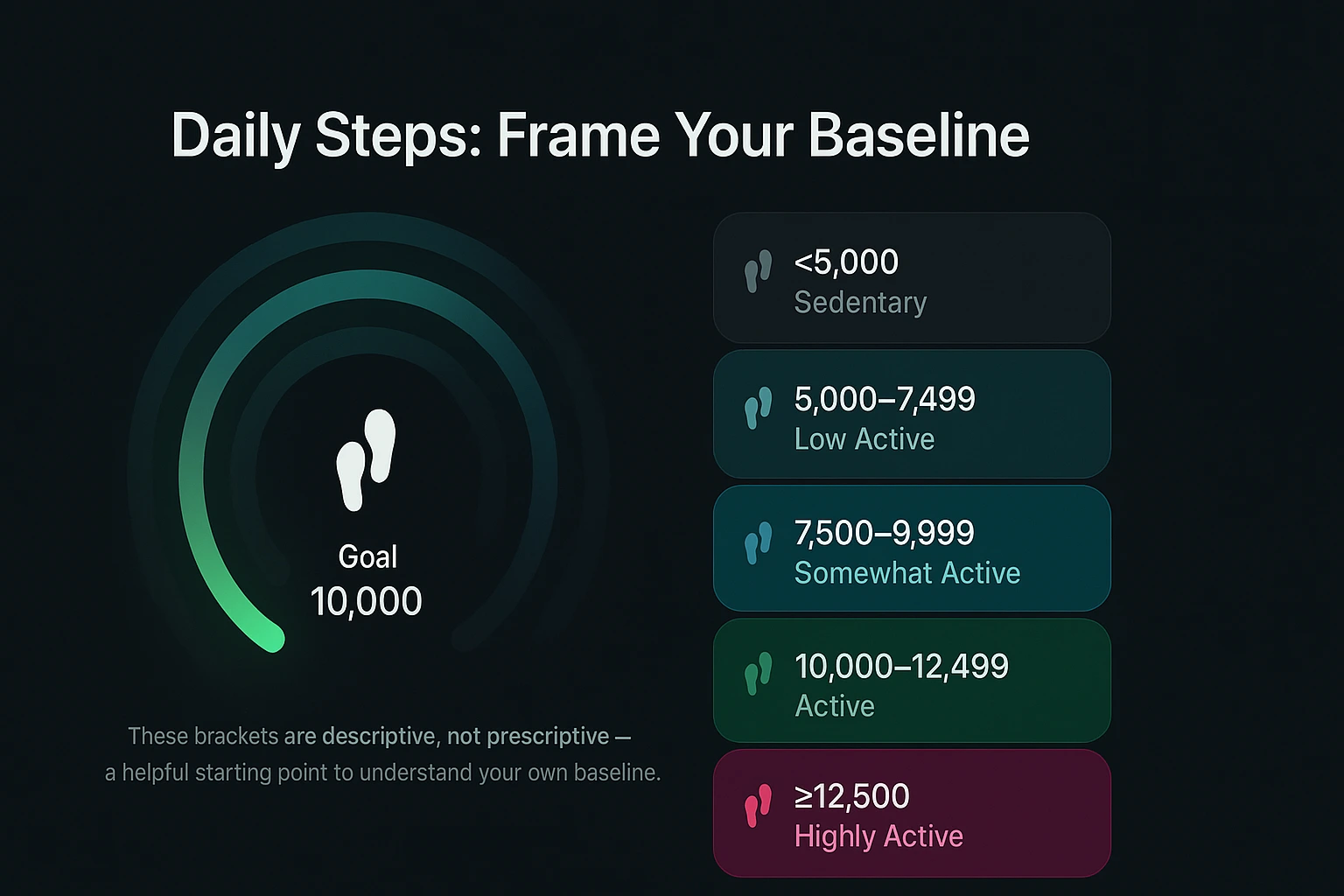Worldwide, smartphone data peg the global average at ~4,961 steps/day. In the U.S., older pedometer/accelerometer surveys land closer to ~6,500 steps/day, while newer smartphone readings often find ~4,800 steps/day—likely reflecting how people carry phones. So “average” varies with the device and who’s being measured.
Why the “average” keeps shifting
Two things shape the number you hear:
Who’s in the sample. A 111-country smartphone study logged ~4,961 steps/day on average, with wide country-to-country variation linked to walkability and “activity inequality.”
How steps are measured. Pedometers/waist accelerometers catch more steps at home or at work; smartphones miss steps when they’re on the desk or charger. That’s why U.S. estimates range from ~4,800 (phone) to ~6,500 (wearable). Neither is “wrong”—they’re different lenses.

What about “10,000 steps”?
Ten-thousand is catchy, but it’s a legacy marketing slogan. Modern research finds meaningful health gains well below 10k, with benefits climbing toward ~8k–10k for younger adults and ~6k–8k for older adults, after which returns taper. Translation: more is generally better, but you don’t need a round number to improve health.
Where do you land on the activity scale?

The number that actually matters: effective minimum
Public-health guidelines still speak in minutes (≥150 minutes/week of moderate activity), but steps are a simple proxy most phones and watches track. If you’re under your country’s average, start by adding 1,000–2,000 steps/day. Meta-analyses suggest each extra 1,000 steps is associated with a notable reduction in mortality risk, and moving from very low levels to ~6k–8k appears to deliver outsized benefits.
A practical plan to raise your daily steps (without overhauling your life)
1) Set a “floor,” not a finish line. Pick a non-negotiable floor (e.g., 5,000 or your current 7-day average +1,000). Once you protect the floor, wins stack up.
2) Layer micro-walks around anchors you already have.
- 5-minute “out-and-back” after meals (≈400–600 steps each).
- Park one block farther (≈200–400).
- One extra flight of stairs (≈150). 3) Use the 3×10 rule. Three 10-minute brisk walks deliver ~30 minutes of moderate activity—the same weekly target the CDC recommends—while producing ~3,000–3,600 steps total. 4) Keep intensity honest a few days/week. If joints allow, sprinkle short inclines or faster minutes; higher cadence boosts fitness even at the same step count. 5) Make it social or “stacked.” Walk on calls, pair steps with podcasts, or “earn” screen time with a loop around the block.
3) Use the 3×10 rule. Three 10-minute brisk walks deliver ~30 minutes of moderate activity—the same weekly target the CDC recommends—while producing ~3,000–3,600 steps total.
4) Keep intensity honest a few days/week. If joints allow, sprinkle short inclines or faster minutes; higher cadence boosts fitness even at the same step count.

